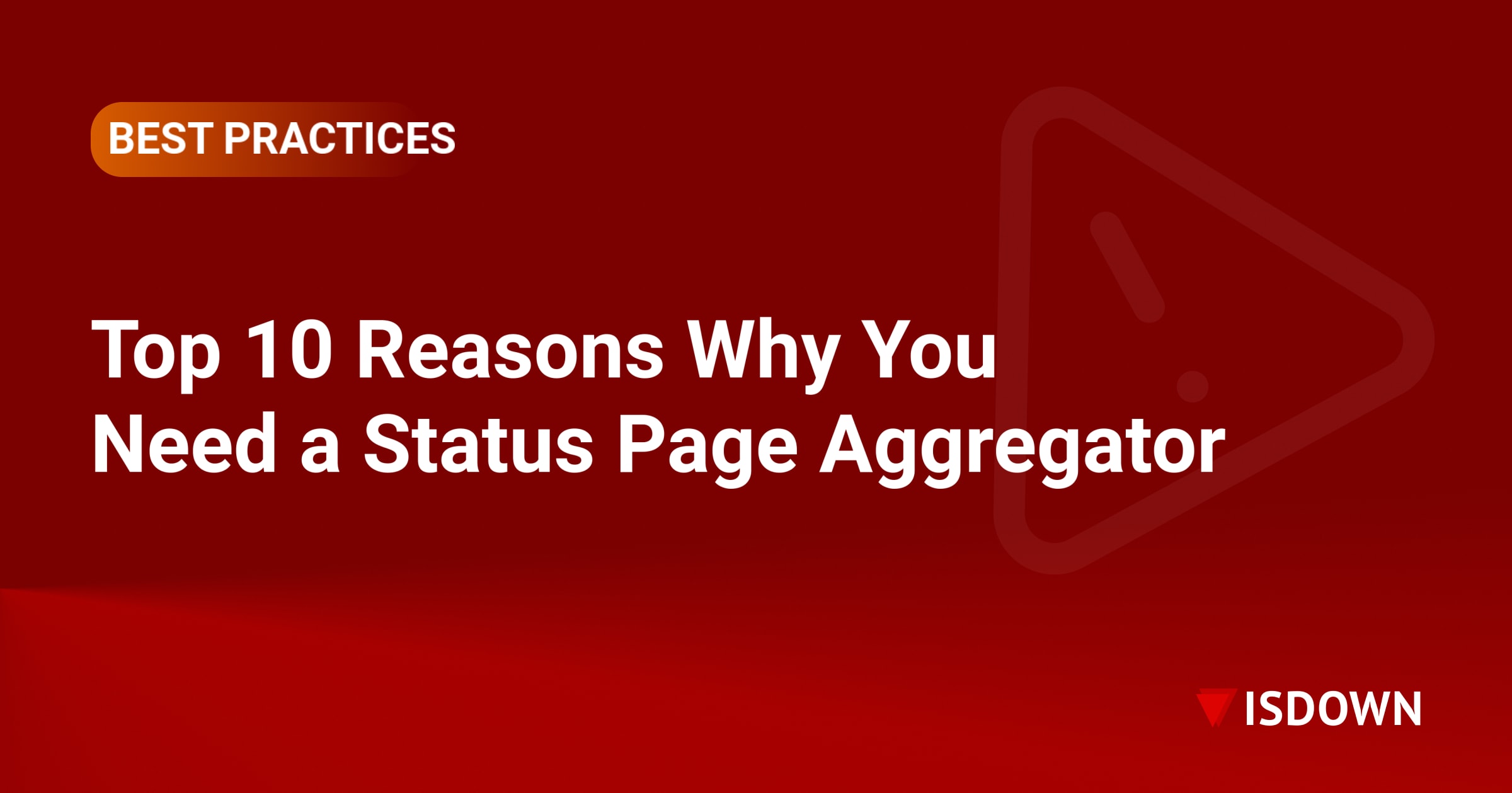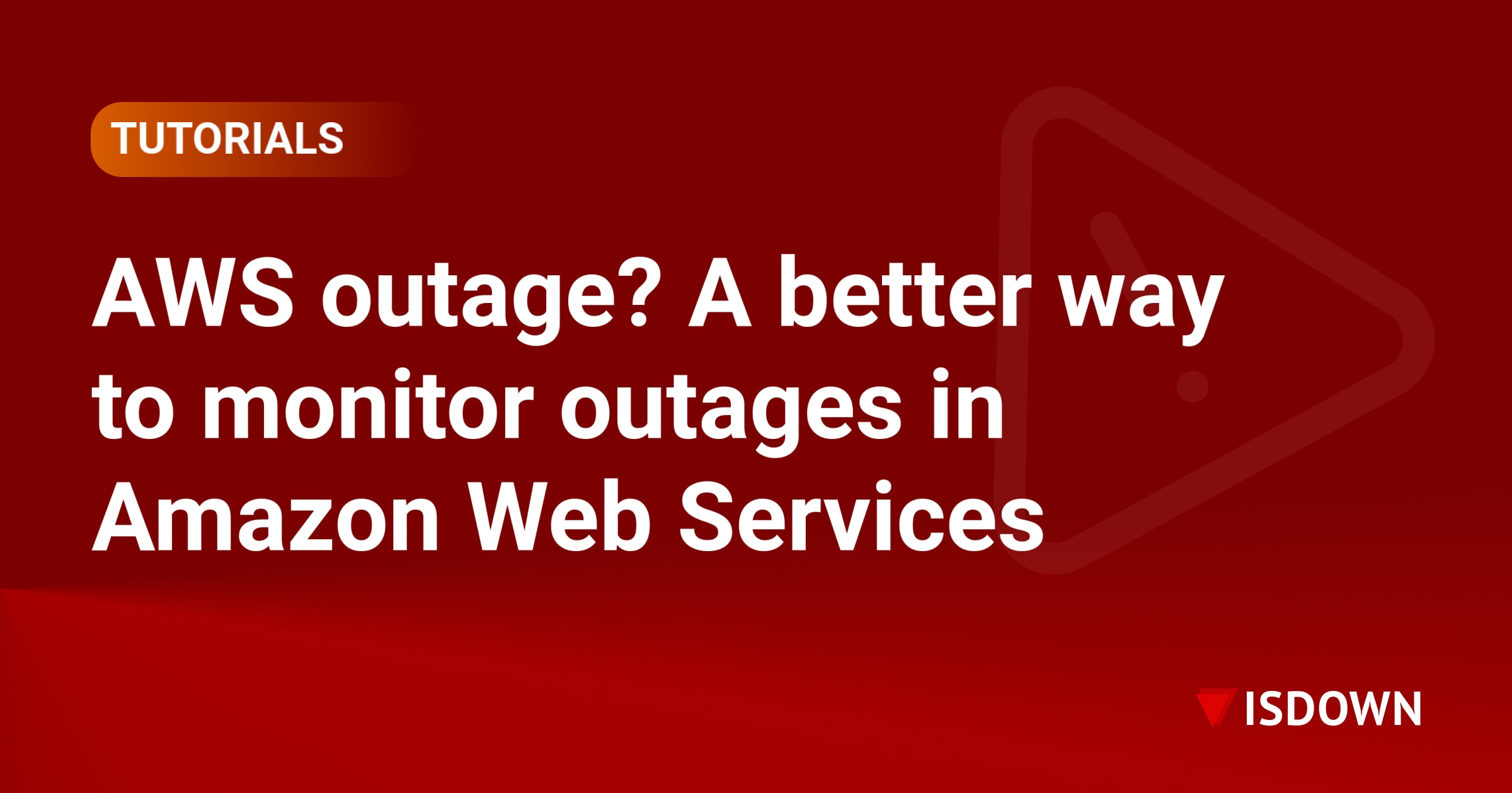The Role of External Service Monitoring in SRE Practices

Modern businesses rely on a variety of external services to support their operations, including APIs, cloud platforms, CDNs, payment gateways, and more. Whether it's pulling data from an external API, using a cloud service for storage, or integrating a third-party tool for analytics, these services help achieve many business objectives.
Given their criticality, it’s important to have a reliable mechanism for monitoring external services. Monitoring ensures that any disruption is quickly detected and handled before it causes major issues. Let’s discuss more below.
Importance in SRE practices
Site Reliability Engineers (SREs) are responsible to ensure the reliability and uptime of systems. This responsibility extends not only to internal services, but also to the external services that these systems depend on. Here are a few reasons why it’s crucial to monitor external services just as vigilantly as internal ones, if not more so:
- If a key API, cloud service, or third-party tool goes down, your system may experience failures, even if your internal services are running smoothly. For example, suppose you have a food delivery service that relies on Google’s Maps API for location services. If Google Maps experiences an outage, your customers may be unable to place orders.
- Unlike internal services, you have little to no control over external services. It’s only through close monitoring that you can detect issues early and plan to remediate.
- Many external services come with Service Level Agreements (SLAs) or Service Level Objectives (SLOs). Through regular monitoring, SREs can verify that these commitments are being met and hold vendors accountable.
Challenges of external service monitoring
External service monitoring comes with its own set of challenges that SREs must navigate:
Limited visibility
As we mentioned above, SREs often have restricted access to external service infrastructure and performance metrics. This can make it hard to diagnose issues. For example, if a SAAS API returns incomplete error messages then finding the root cause can be challenging.
Inconsistent monitoring capabilities
Some third-party services may not provide sufficient or consistent monitoring data. This inconsistency can leave gaps in your understanding of the service's health, which in turn can lead to blind spots in your monitoring setup.
Different data formats
External services may return data in different formats, which can complicate data processing and analysis. For example, a database service may return data in JSON, while a CDN may return data in a custom format.
Shared responsibility
If an external service is managed by a third party, you may have to cooperate with their support team to resolve issues. This added layer of communication can slow down incident response times.
Increased noise
With multiple external services in play, SREs may face alert fatigue due to an overwhelming number of notifications, especially if they don’t have a centralized dashboard for monitoring. Filtering out the important signals from the noise is a constant challenge.
How to implement effective external service monitoring
The key to effective external service monitoring is using the right tools. One such tool is isDown.app, an all-in-one platform that gathers status updates from all your external services and unifies them into a single, centralized dashboard. Here are some reasons why isDown has been a preferred choice for many:
- It collects information from the official status pages of over 3,150 vendors, providing a reliable single source of truth for your team.
- IsDown offers real-time notifications that alert your team the moment an outage occurs. This ensures that you can respond quickly and keep service disruptions to a minimum.
- It integrates seamlessly with tools like Slack, Microsoft Teams, Datadog, Pagerduty, FireHydrant, Opsgenie, and more.
- Unlike other solutions that overwhelm you with constant notifications, IsDown allows you to set customized rules for alerting. For example, you can filter alerts by components or severity.
- IsDown’s API allows for quick and easy integration with your existing ecosystem. There’s no need for complicated installations or lengthy processes—setup takes just five minutes.
- You can also analyze historical outage data to identify trends and make informed decisions about future investments in infrastructure.
Implementation best practices
To get the best out of isDown.app, or any monitoring tool in general, here are some best practices to follow during implementation:
- Tailor your alerting rules based on the severity of issues or specific components. This reduces noise while keeping your team focused on critical matters.
- Define clear escalation procedures so that when an external service fails, your team knows exactly who to notify and how to resolve the issue.
- Take advantage of historical outage data to spot trends, recurring issues, and patterns of downtime. Use this data to improve system resilience and plan for future needs.
- Maintain close communication with your service vendors to stay informed about any planned maintenance or potential issues. This will help you avoid unnecessary/unexpected surprises.
- Periodically audit your monitoring setup to ensure that all integrations are working, alerting rules are still relevant, and your team is receiving timely and actionable notifications.
What do you stand to gain?
External service monitoring delivers tangible value across several areas. For example:
Proactive issue resolution
Instead of waiting for users to report problems, you can use real-time monitoring to detect and resolve issues in a timely manner. For example, if your cloud provider experiences an outage, your team can start working on mitigation strategies (like failovers) before it affects your entire infrastructure.
Cost savings
Downtime and service interruptions often result in lost revenue. With effective monitoring, businesses can reduce the frequency and length of such disruptions. For example, an e-commerce platform can avoid lost sales during peak traffic by quickly addressing an issue with an external payment gateway.
Better decision-making
Regular monitoring provides valuable data on service performance and trends. This information can help businesses make informed decisions, such as whether to continue using a specific service, negotiate better terms with vendors, or prepare for potential issues during high-demand periods.
Enhanced system resilience
Lastly, monitoring also enables businesses to build more resilient systems. For example, by detecting recurring issues with a third-party API, an SRE team can implement failover solutions or redundancy plans to ensure that a single point of failure doesn’t bring the entire system down.
Conclusion
As an SRE, you are tasked with ensuring the reliability of the entire system, and that includes the external dependencies your infrastructure relies on. With tools like isDown in your arsenal, you can detect external service issues early, respond quickly to outages, and maintain a high level of system availability and performance. Sign up now to get started.
 Nuno Tomas
Founder of IsDown
Nuno Tomas
Founder of IsDown
The Status Page Aggregator with Early Outage Detection
Unified vendor dashboard
Early Outage Detection
Stop the Support Flood
Related articles
Never again lose time looking in the wrong place
14-day free trial · No credit card required · No code required




